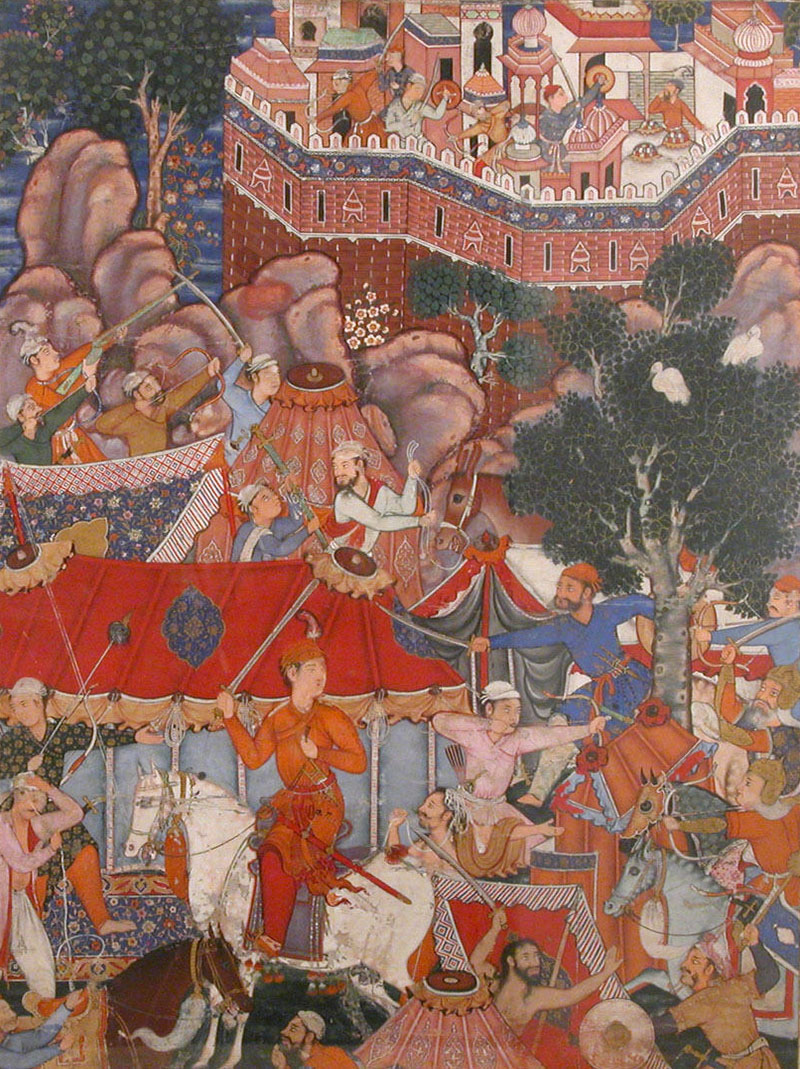An illustrated manuscript on an epic of the same name, Hamzanama is a fictional tale inspired by the life of Hamza ibn Abdul-Muttalib (c. 569–625), the uncle of prophet Muhammad. It is an adventure epic composed of folk tales, legends, religious discourses, about heroes and spies that narrate the struggles of Muslims against the “infidels” but also about fantastical characters like magicians, demons and fairies. Though the narrative itself may have been passed down from generation to generation through oral storytelling, one of its most well-known forms is the illustrated manuscript that was created during the reign of Akbar, between 1562–77. The illustrated manuscript is unique for being one of the first examples of traditional Mughal miniature painting and also one of the largest in scale.
Consisting of around 1400 paintings, the manuscript is also of an exceptionally large size, approximately 20 x 27 inches. Most paintings have been painted on large pieces of cloth which are then attached to paper on which the text is written in Persian nastaliq script. In some cases, towards the beginning of the manuscript, text and image appear together or with illustrations on both sides of the folio. The complete manuscript was bound into fourteen volumes.
The manuscript was created under the supervision of Persian artists Mir Sayyid Ali and Abd al-Samad; the former was replaced because, under his direction, only four volumes had been completed in seven years. The manuscript engaged over a hundred artists, gilders and bookbinders including notable names such as Basawan and Daswanth, amongst several others. It took fourteen years to complete. The project was significant for its amalgamation of Persian and Indian styles, which might have been caused by the large employment of Indian painters in Akbar’s growing atelier. The workmanship of the Hamzanama along with its use of bold colours, as compared to earlier Persian paintings, may have been caused by the lack of availability of fine ground pigments and paper, which were easily available to the artists in Persia. Compositionally, the manuscript is closely linked to the Tutinama, where the illustrations are based on one central episode which is normally achieved by elements such as peripherally positioned characters framing the central episode. But all these factors make the manuscript a unique example of Mughal miniature style painting.
Of the total paintings that now remain, many are housed in different museums all over the world. Notably, sixty-one are housed in the Museum of Applied Arts, Vienna (Österreichisches Museum für Angewandte Kunst or MAK) and twenty-seven are in Victoria & Albert Museum (V&A), London.







